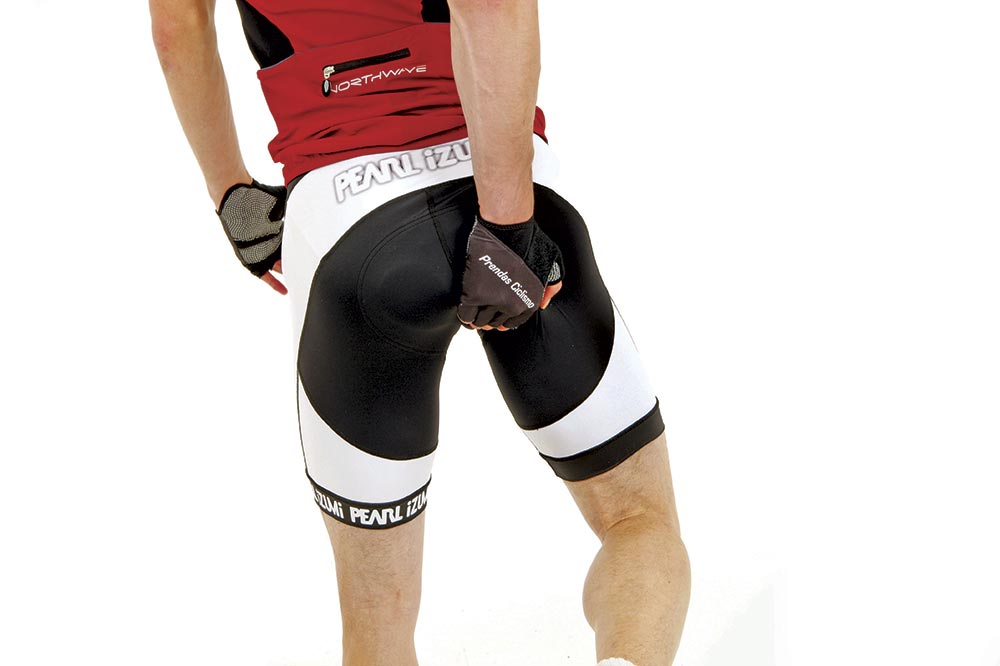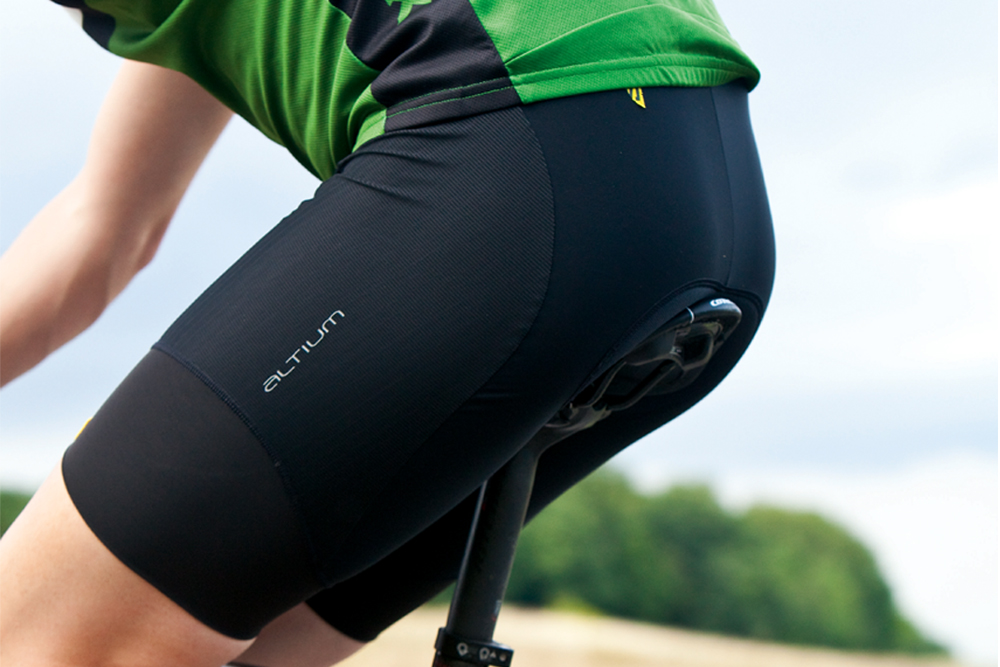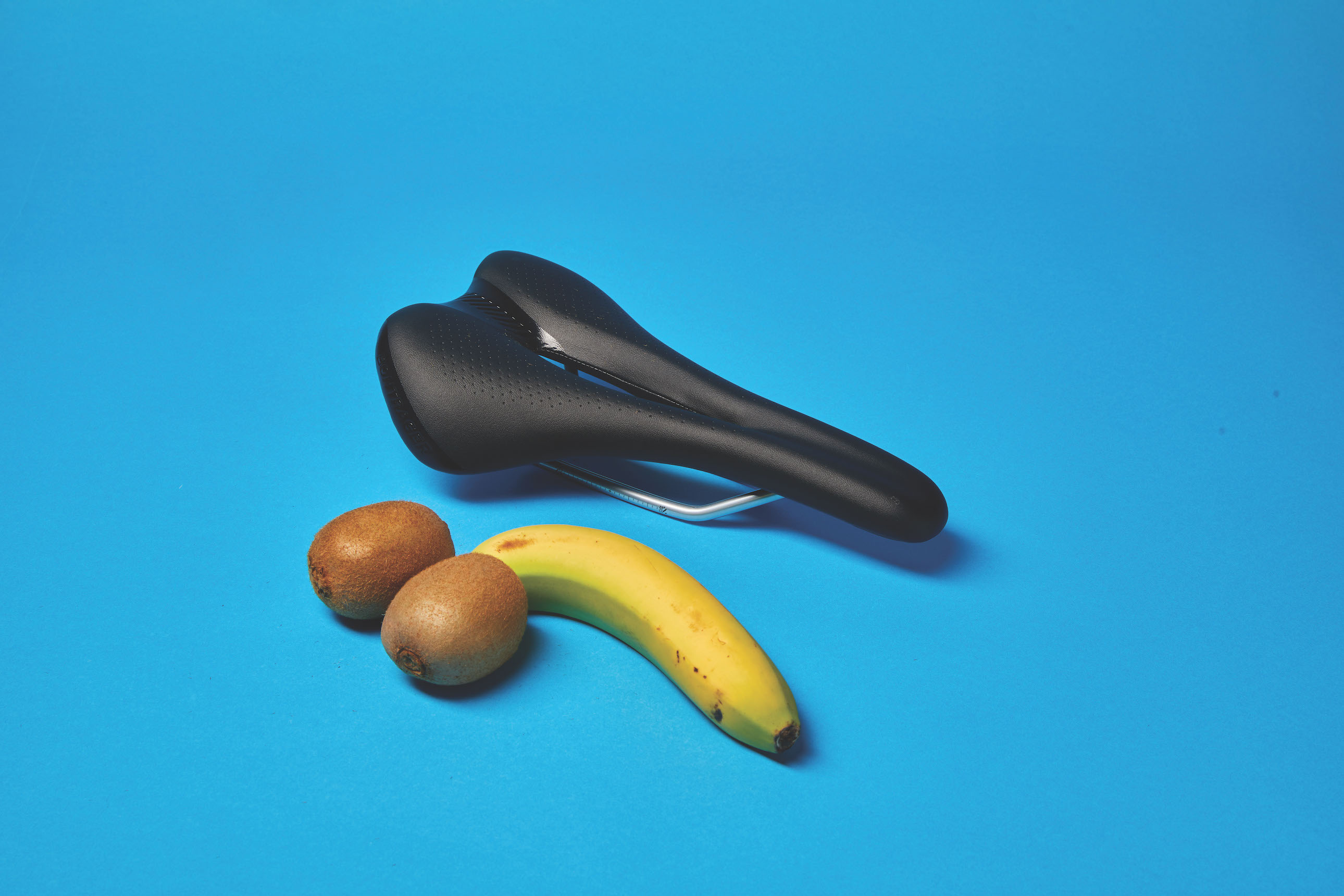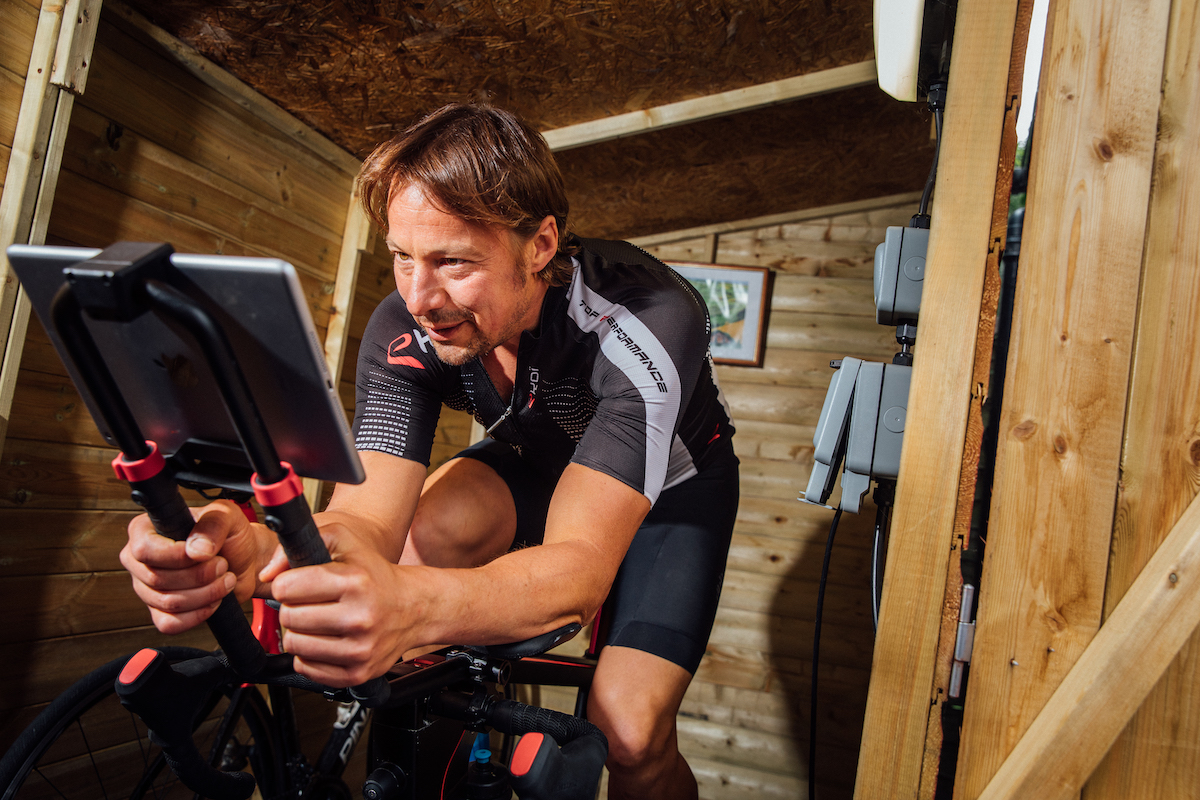Five most embarrassing side effects of cycling, and how to avoid them
Cycling is a beautiful sport, but it can also be a dirty, painful, and embarrassing one. Cycling coach Zach Nehr lifts the lid on the problems some of us don't like to discuss...

Fortunately, cycling is an incredible form of exercise, sport, and physical activity. It connects millions of people from around the world, helps children get to school, and helps people discover their love of the outdoors. Not only is cycling fun, but it is also challenging, motivating, and rewarding. Cycling has endless benefits and can truly change your life.
Unfortunately, cycling can also come with some embarrassing side effects. Not all of us feel comfortable in skin-tight lycra - and when you throw in issues around saddle discomfort, occasional gastric distress, and a whole lot of sweat, there are plenty of opportunities to feel a little bit red-faced.
From saddle sores to revealing clothes and everything in between, we’ve heard it all before, and we are here to help. Here, we will shed light on the most common problems in cycling, especially the embarrassing ones. Not only will you find something you can relate to, but you will also learn how to prevent these problems in the future, and get rid of the ones you have now.
Starting from the bottom up...
Saddle sores — a pain in the butt

Pro Tips
NEVER reuse a chamois (the pad that comes in cycling shorts for men and cycling shorts for women). ALWAYS wear a clean pair of shorts on every ride. It is best practise to get out of your chamois as soon as you're done riding, so don’t stay too long at the coffee shop before heading home for a wash.
Never wear underwear beneath a chamois – it should be skin-to-chamois contact, which will reduce chafing and help prevent saddle sores. This advice can present issues for menstruating women who use sanitary towels - many female riders opt for a menstrual cup (such as the Mooncup).
If possible, try out a few pairs of shorts, as different chamois pads suit different riders.
I wouldn’t wish saddle sores upon my worst enemy. There is nothing that sucks the joy out of cycling more than the painful and burning feeling of a saddle sore. In some cases, these sores can develop into lumps, bumps, or even tumours. In extreme cases, you may need surgery to remove them.
These sores can develop because cycling is an activity that puts us in a very unique position compared to the rest of our lives. Whether we are at the office, sitting at the kitchen table, lying in bed, or walking to lunch, we are never hunched over with the majority of our bodyweight on our perineum – the area between the genitals and anus – in the way that we are on the bike. And not only that, but we are also experiencing constant rubbing between our pumping thighs as they turn with each and every pedal stroke.
In summary, saddle sores are no surprise, but that doesn’t make them any less severe. Even professional riders get saddle sores, and some have to end their seasons pre-maturely as a result.
Get The Leadout Newsletter
The latest race content, interviews, features, reviews and expert buying guides, direct to your inbox!
Thankfully, the majority of you reading this are not professional cyclists, which means that we will never be forced to choose between racing on a saddle sore or missing a paycheck.
The best thing that you can do if and when saddle sores began to creep up is to take a break from the bike. Just a day or two at first, and longer if the problem persists. As a preventative measure, you should check your bike fit at least once per year, and try out new saddles before giving up on the problem.
Using chamois cream can certainly help to prevent chafing, and those with antibacterial properties will keep saddles sores at bay. It's also good to practice good hygiene - shower after a ride, and make sure skin is clear and dry.
It's well documented that British Cycling's advice for its athletes is to avoid hair removal in this area - as this leaves riders vulnerable to ingrown hairs and removes a layer of protection - and to use Doublebase gel (which is available over the counter in most chemists) to treat any sore areas. In the instance that riders feel they must remove hair, opting for clippers and trimming over waxing and shaving was advised.
If you ignore saddle sores, you are putting yourself at risk for infection, potential surgery, and plenty of pain, as well as a significant amount of time off the bike. It's better to prevent that react, in life and with saddle sores.
Numbness

Pro Tips
Try angling your saddle up or down to reduce perineum pressure.
Avoid choosing a saddle which is heavily padded, such as those that come on townie bikes and cruisers. These saddles may be comfortable for a quick spin around town, but they are anything but (no pun intended) for longer rides.
It is normal to have rare feelings of numbness while cycling, as long as they are infrequent and short-duration occurrences. If you are losing feeling for more than 10 seconds, then something is wrong. Likely, it is due to your cycling position and the pressure that you are exerting on your hands, shoulders, lower back, or perineum.
Cycling should feel comfortable – and depending on which kind of bike you have (roadie, hybrid, MTB, etc.), your position may be more or less aggressive. Either way, you should never have long-lasting numbness anywhere in your body, as this is a sign of restricted blood flow that could damage your nerves, performance, or blood vessels.
Men are at high risk for experiencing penile numbness, which occurs when blood flow to the penis is cut off due to excess weight on the perineum, whilst women often discover discomfort around the labia or clitoris. This can all be fixed with a proper bike fit and well-fitting men's saddle or women's saddle.
Many bike fits include pressure mapping which will help identify the best saddle for you. Whilst being open and honest about where you're experiencing pain can feel uncomfortable, rest assured, it's the fitter's job to put you at ease - and no doubt they've heard it all before.
Larger riders, by weight, are at an increased risk for experiencing numbness, and so it is especially important that they find the right saddle and a good bike fit.
Tingling is an early warning sign that blood flow is being restricted somewhere in your body, and that this is being caused by an abnormal cycling position. There are many fixes for this problem, some quicker and some more expensive.
For starters, take a day or two off the bike. Perhaps you were just spending too much time on the bike.
You can also try riding out of the saddle more often, which lifts the weight off of your perineum, while simultaneously allowing you to stretch your legs, back, arms, and core muscles.
If your problems continue to persist, try out a new saddle, and preferably one that is cut-out, or relief channel, in the middle. These saddles are specifically designed to reduce pressure on the perineum – and speaking anecdotally, I know countless riders who made the change to cut-out saddles years ago and never looked back.
Lastly, the most thorough way of evaluating your cycling position is to see a professional bike fitter. They will help adjust your saddle, handlebars, reach, and everything else about your position to help you avoid numbness and ride without pain.
NAUSEOUS GASES
Pro Tip
If you’re riding outside, it’ll be easy to pass off the blame. Just pick the nearest smelly object – such as a car, factory, or cow – and your friends will never think twice.
It is no secret that cyclists eat a lot. Whether it is pastries, energy bars, or burritos, there will be plenty of calories coursing through a cyclists’ body. And with that comes the inevitable ‘wind breaker,’ but not the wearable kind.
We’re talking about flatulence, farting, trouser trumpets…whatever you want to call it. It is only natural, and the average person farts upwards of 20 times per day. I’d argue that cyclists produce even more.
Flatulence is natural, and it is actually the sign of a healthy and churning gut.
Without getting too deep in the weeds, digestion relies on your body’s ability to breakdown nutrients, and often this breakdown process produces gas.
In fact, some of the same bacteria that breakdown nutrients into vitamins, minerals, and more, are the same bacteria that help maintain a healthy gut, reinforce colon lining, and may even support our immune systems.
The bottom (no pun intended) line is that flatulence is completely natural, and it’s better to let it rip and have a laugh, rather than hold it in and risk upsetting your stomach. You might even get a little turbo boost from the extra wind. (The science is lacking on that one, but only because it hasn’t been tested yet.)
Ugly sweaters (and not the Christmas kind...)

Pro Tip
Use sweatbands, towels, and floor mats during indoor training to avoid sweating all over your bike, your handlebars, and the floor. Not only can this leave a wretched stink in the room, but it can also damage your bike and components. Personally, I’ve seen riders who sweat through their bar tape and clogged up their shifters, filled their top cap with crusted sweat salt, and short-circuited their electronic shifting with all of their sweat. Don’t make that same mistake.
Some of us are heavy sweaters, and not the good-looking kind like Magic Mike or Idris Elba in a chase scene. Cycling is hard, and whether you are indoors or out, you will probably be sweating, a lot.
Sweating is annoying, uncomfortable, and off-putting, but it is also completely necessary. Leaking through our pores allows our body to stay cool, even in the heat of summer or during an FTP test. Without, we would collapse over the handlebars when our core temperature exceeds capacity.
Just like flatulence, it’s important to remember that everyone sweats, and it is only a sign that you are working hard (and that you are crushing it!). In fact, sweat is odourless, which means that any stink we smell from sweat is actually the bacteria on our skin, kit, or shoes. Keep your body and your kit clean, and you are far less likely to stink when sweaty.
Be aware that sweat may affect you in more ways than one. Sweat can fog up your cycling sunglasses, drip into your eyes, stain your kit, or irritate your nether regions. It can also smell, which is worse when cycling indoors.
Indoors, keep a fan or two running and crack the window open. It’s simple enough, but that should do the trick. Outdoors, try wearing a cycling cap to keep sweat out of your eyes, and use chamois cream to keep things clean and cool 'down there'.
Smelly feet and smelly cycling shoes
Pro Tip
Wear clean socks on every ride, and use well-ventilated shoes to avoid locking the wet air inside. On a wet or muddy ride, take off your shoes and socks as soon as you get home, and make sure to dry your shoes with a hair dryer or newspaper before your next ride.
It is a problem that has plagued humanity for centuries – after a hard day’s work, you come home and slip off your shoes, only to have the warm and heavy stench of your damp socks waft up into your nose. Depending on how bad the stench is, you may leave the shoes outside, throw them in the trash, or off them in a fiery blaze.
Heaven forbid you take your cycling shoes off at the café, even if your only intention was to get rid of that pesky pebble that’s been bothering you since kilometer 10. Now the whole world knows that your feet stink.
Foot stink might not be your fault – in fact, there is an official diagnosis for chronic foot odour: Bromhidrosis. The condition is caused by sweat gland secretions mixing with bacteria on the skin, which more often occurs with damp or wet feet.
The simple solution is to keep your feet dry and clean, and that means a quick wash or shower right after your ride. Microorganisms thrive in damp areas, which is the reason that you should take off your dirty chamois as soon as you’ve finished your training ride. The same goes for your feet – keep them dry and clean, and you’ll have a better chance of the stench going away.

Thank you for reading 20 articles this month* Join now for unlimited access
Enjoy your first month for just £1 / $1 / €1
*Read 5 free articles per month without a subscription

Join now for unlimited access
Try first month for just £1 / $1 / €1
Zach is a freelance writer, the owner of ZNehr Coaching, and an elite-level rider in road, track, and Zwift racing. He writes about everything related to bikes, from product reviews and advertorials, to feature articles and pro data analytics in Power Analysis articles. You can find his articles everywhere from Cyclingnews and TrainingPeaks, to Velonews, CyclingTips, and Bicycle Guider.
After earning a Bachelor’s Degree in Exercise Science at Marian University-Indianapolis, Zach discovered a passion for writing that soon turned into a full-fledged career. In between articles, Zach spends his time working with endurance athletes of all levels at ZNehr Coaching. After entering cycling at age 17, Zach went on to have a wonderful road racing career that included a Collegiate National Time Trial Championship and a 9th place finish at the US Pro National Time Trial Championships. Nowadays, Zach spends most of his ride time indoors, where he races for NeXT eSport pb Enshored in the Zwift Racing League – Premier Division.
-
 'I'll take a top 10, that's alright in the end' - Fred Wright finishes best of British at Paris-Roubaix
'I'll take a top 10, that's alright in the end' - Fred Wright finishes best of British at Paris-RoubaixBahrain-Victorious rider came back from a mechanical on the Arenberg to place ninth
By Adam Becket Published
-
 'This is the furthest ride I've actually ever done' - Matthew Brennan lights up Paris-Roubaix at 19 years old
'This is the furthest ride I've actually ever done' - Matthew Brennan lights up Paris-Roubaix at 19 years oldThe day's youngest rider reflects on 'killer' Monument debut
By Tom Davidson Published